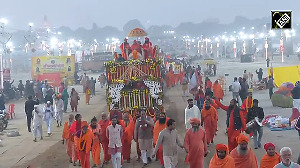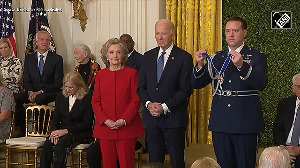Indians love their booze, but beer, it seems, leaves them cold. The country ranks tops globally in consumption of whisky, but it's somewhere near the bottom in beer drinking. So why is just about everyone in the brewing industry scrambling to get a piece of the market?
Despite the obvious preference Indians have for distilled spirits, beermakers worldwide think there's great potential for selling their brews in the country. A hot climate, an even hotter economy, and an enormous youth population look like an unbeatable combination in the eyes of Britain's SABMiller and Scottish & Newcastle, Heineken of the Netherlands, and Denmark's Carlsberg. Facing flat sales in many Western markets, all have set up India operations in recent years, either on their own or in tieups.
The latest to join the fray is Anheuser-Busch Cos. The No. 1 American beermaker has just inked a 50-50 joint venture with local player Crown Beers. In May, the two plan to start churning out Budweiser and other brands at a new brewery in the southern Indian city of Hyderabad. "India is still pretty small," says Stephen J. Burrows, CEO of Anheuser-Busch International. "But it has great potential."
Pretty small is putting it mildly. Although India boasts the world's second most populous nation, when it comes to beer it barely figures on the map -- leaving plenty of upside for brewers who can get in early. Annual per capita consumption stands at just 0.6 liters, or about a pint, compared with 23 liters in China, an average of 73 across Europe, and 78 in the U.S. "Why should I waste money on beer when whisky does the trick much faster?" says Sudnya Bordoloi, a 21-year-old saleswoman at a Mumbai department store.
Getting Indians to switch from liquor to beer won't be easy. Brewers must contend with a dizzying list of bureaucratic restrictions that make it tough and expensive to win customers and to build a national footprint. Steep tariffs render imports uncompetitive.
And state excise taxes of as much as 150% can push the price of a pint of domestic brew up to more than $3, or
Ads for beer are banned. As a result, brewers have to be creative in building their brands on a national scale. SABMiller, for instance, sells a mineral water called Royal Challenge -- not coincidentally the name of one of its lagers. TV spots for the water are indistinguishable from traditional beer ads, down to the label on the bottle.
The only difference: The actors guzzle a clear liquid rather than amber-colored suds. "It looks like a beer ad, but we sell water," says Delphon de Vaux. The boldest ploy, though, comes from Bangalore-based United Breweries. Its chairman, Vijay Mallya, launched Kingfisher Airlines -- named after United's flagship brew, India's top seller -- and emblazoned the planes with its logo.
In short, international brewers will be charged with crafting a beer culture in India largely from scratch. In that, at least, they have demographics in their favor. Roughly 60% of the population is under 30. What's more, incomes are rising, powered by an economy that's growing at 9%-plus. These trends are expected to fuel growth in beer consumption of up to 15% a year through the end of the decade.
To date, the biggest beneficiary of the surge has been Kingfisher. The brand rules the market, with a 45% share. But closing in is SABMiller, which over the past six years has spent an estimated $600 million in India to buy 11 local breweries.
Today, the company's five brands command 37% of the market. And Heine-ken, though it's small today, is hoping to boost its profile following its $18 million purchase last year of a controlling stake in India's Aurangabad Breweries Ltd. "India," says Vivek Chhabra, Heineken's country chief, "is the place to be."






 © 2025 Rediff.com -
© 2025 Rediff.com -